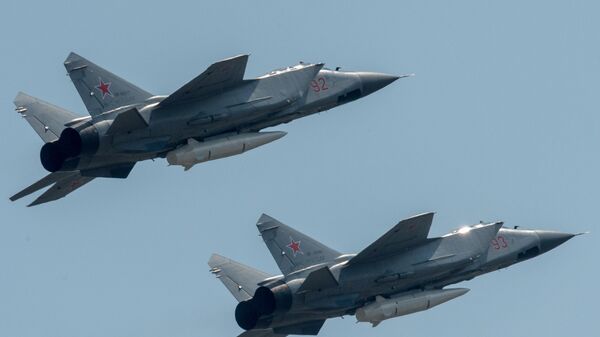Sputnik sets the record straight by outlining the key differences between these two very distinct types of weapons:
Ballistic missiles
Powered by a single rocket or series of rockets operating in stages to propel them to the required trajectory, ballistic missiles ascend tens of kilometers into the atmosphere, shedding motors and thrusters along the way, with larger ones leaving the atmosphere altogether, after which their payload separates and begins its descent back down toward Earth, traveling in an arc.
Ballistic missiles typically have three flight phases, starting with the boost phase, followed by a midcourse phase – which starts when the rocket motor(s) stop(s) firing and the missile’s payload starts to coast, usually while continuing to ascend, and finally the terminal phase, during which the payload starts the final course toward its target(s).
Some also have a distinct fourth phase, which kicks off after the post-boost phase, during which the onboard multiple independent reentry vehicle (MIRV) bus makes changes to its trajectory, and decoys are released to confuse and saturate enemy missile defenses.
Some ballistic missiles can make changes to their trajectory, so long as onboard rocket fuel allows, but usually, any maneuverability attributed to these weapons is the result of their payloads.
Russia’s Avangard hypersonic glide vehicle, for instance, is blasted into space by an ordinary ICBM, but becomes maneuverable after separating from its carrier. MIRV buses also often contain small rocket motors and inertial guidance, allowing alterations to its payload's trajectory before individual warheads separate.
Cruise Missiles
Cruise missiles are jet engine-powered weapons that stay within the atmosphere throughout their flight. In fact, they often fly at extremely low altitudes, ‘hugging’ the ground as few as a few meters from the surface to avoid detection.
These weapons are designed for precision strikes against an array of ground and sea-based targets and, if fitted with nuclear warheads, can target large built-up areas or entire carrier strike groups (in the case of Russia’s P-800 Oniks, for example). Conventional cruise strikes can be calibrated to attack targets as small as individual buildings or bunkers.
Cruise missiles stay maneuverable through their approach to their targets, featuring GPS, inertial guidance, terrain mapping and/or other tools to guide them. Some designs allow human operators to manually guide missiles in the terminal phase.
Pros and Cons of Ballistic and Cruise
Cruise missiles are typically far cheaper (costing as little as 15% as a typical tactical ballistic missile), with their launch more difficult to detect, and the missiles boasting higher accuracy. However, unless they are nuclear armed, their firepower is typically lower, with the US AGM-86 ALCM air-launched cruise missile boasting the largest payload in this class of weapon – 1,362 kg, while most cruise missiles average about 500 kg.
Ballistic missiles are typically less accurate (with a circular error probable, or CEP, measured in the tens or even hundreds of meters, compared to meters for cruise missiles), but do have a number of distinct advantages – the most obvious of which is payload size (Russia’s RS-28 Sarmat, for example, has a 10,000 kg payload).
Ballistic missiles’ arcing approach also allows their payloads to accelerate to incredible speeds (often hypersonic), while cruise missiles typically stay subsonic or supersonic through their flight, which makes them easier to intercept, and reduces the sheer kinetic force with which they slam down onto their targets.

 1 month ago
17
1 month ago
17









 We deliver critical software at unparalleled value and speed to help your business thrive
We deliver critical software at unparalleled value and speed to help your business thrive






 English (US) ·
English (US) ·